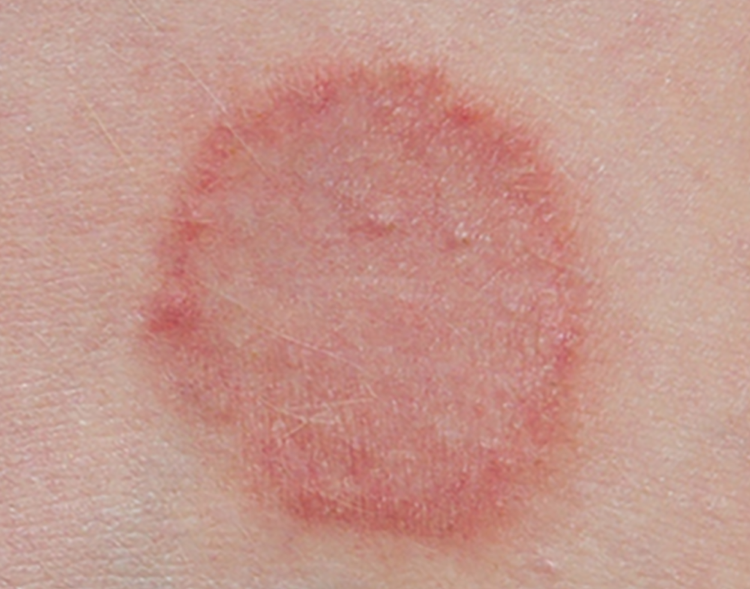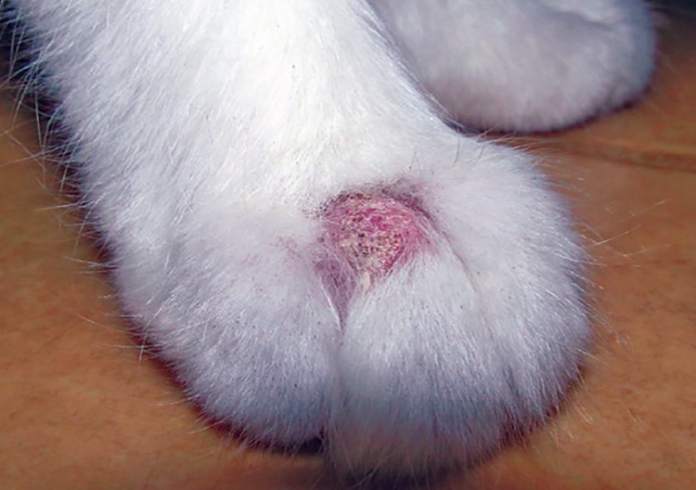If you notice that your daughter who sleeps with her cat closely cuddled up has some red, round patches on her skin, think ringworm. This contagious fungal infection may be difficult to detect on your cat, so visit your veterinarian for a diagnosis and call your dermatologist for human symptoms.
On cats, ringworm may appear as localized areas of dry skin, with or without itching. While the classic round patches are often seen, even irregular areas could be ringworm. Ringworm is a dermatophyte, which is a fungus that lives on the skin and requires keratin for growth. Keratin is a protective protein found in skin, hair, and nails.
The two most common organisms that cause ringworm in cats are Microsporum canis, which can survive in the environment and on cats and kittens with no clinical signs, and Microsporum gypseum, which lives in the soil. Both organisms can be found on dogs, too, and can spread to people, although the latter is usually only found in people with a weakened immune system. If one pet is positive for ringworm, all your pets should be checked since it can spread from pet to pet as well as pet to people.
Classic ringworm lesions in cats are circular areas of hair loss, though with time, the hair may start to grow back in the center. There may or may not be itching. Some cats can carry the fungus with no clinical signs, but other pets and people in the house may develop the round skin lesions. Infected areas may be red due to skin irritation, and there may be broken hairs around the lesion due to cuticle damage of the hairs.

Ringworm on a human leg.
Your veterinarian may use a Wood’s lamp, which is a hand-held black light (M. Canis will fluoresce), and/or do a trichogram. A trichogram involves using a microscope to look for fungal spores on hairs plucked from the affected area. While these two tests are quick, each can return false positive or false negative results.
Doing a fungal culture is important to determine the type of fungus to guide treatment. To do this, some hairs are carefully plucked from within or next to an affected area and placed on a culture plate. Cultures are checked daily for growth and color changes. Spores from culture growth can help identify specific fungi.
Treatment is commonly a two- or three-tiered process. Topical medications are often all that is necessary. Some veterinarians like to combine topicals with a shampoo to help reduce environmental contamination. Systemic medications can be given, although cats may suffer from side effects to these drugs.
Thorough cleaning of the environment (bedding, etc.) should be done, and affected pets should be isolated to limit contamination.




